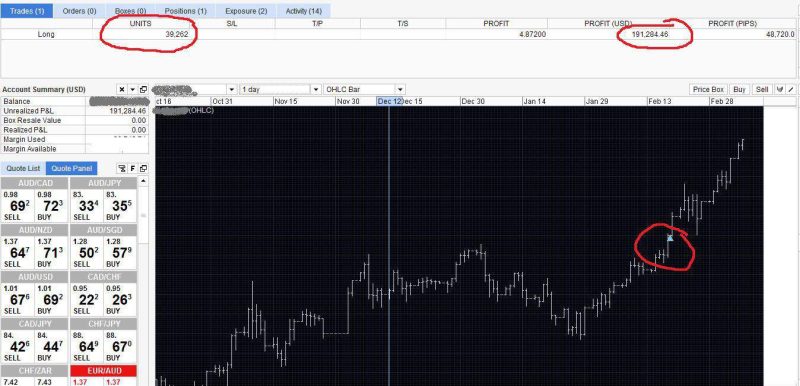A tracking stock is special equity or common stock issued by a parent company that helps in tracking the financial performance of a particular segment or specific division of the business. The act of tracking stocks gives investors the opportunity needed to value some aspects of a large enterprise but on different terms.

Tracking stocks opens up the trade-in open market independently of the parent company's stock. The tracking stocks allow many companies to separate the financial performance level of a high growth division. In return, tracking stock gives an investor the capacity to obtain exposure to a specific aspect of a large company's business operations.
Also Read: What Are Cyclical Stocks?
Contents
- Understanding Tracking Stocks
- Tracking Stocks Examples
- How to Track Stocks
- Benefits and Risks for Company's Tracking Stock
- Tracking Stocks Benefits and Risks for Investors
- Conclusion
- FAQs
Understanding Tracking Stocks
All revenues and expenses related to the applicable division are isolated from the parent company's financial statements. This happens when a parent company issues out a tracking stock. Long term performance of a tracking company is connected to the financials of a segment or division it follows but is limited from the parent company.

Even if the parent company performs poorly, the tracking stock is likely to appreciate if the division improves financially. In retrospect, if the division in question dips financially, the tracking stock is most likely to fall as well, regardless of the improvement of the parent company.
The registration of tracking stocks is somewhat similar to that of common stocks per the enforced regulations by the United States Securities and Exchange Commission (SEC). The reporting and issuance by the Securities and Exchange Commission are vital and the same for new common shares. In financial reports of companies, a separate site is created for tracking the stock and financials of the primary division.
Tracking Stocks Examples
Sprint was known as the most attractive telecommunication site in the United States during the 1990s. Its vintage landline businesses were the peak of the profits and it paid an enormous dividend. Also, the corporation had a brand new thrilling division that specialized in cell phones.
The stock price of this company went so high to the extent that dividend yield became unsatisfactory. The common stock of this telecommunication utility was divided into common stock of two classes – FON and PCS. The FON was assigned the cash cow gushing money from local, classic landline businesses and long-distance plans. While the PCS was assigned the cellular business.
The demand for PCS became unbelievable after it hit the market. Many employees in the switchboards and telephone poles became millionaires and investors drove the price of the cellular division's tracking stock higher.
Sprint's stock began to collapse with the rest of the overvalued equities on the New York Stock Exchange and Nasdaq. FON became the single ticker of the Sprint board after the company exercised its authority to reassemble the tracking stock. This was done by exchanging shares of PCS for it.
The Walt Disney Company started to sell tracking stock in 1999, for its internet holdings division – Go.com. The websites of Go.com for example, include Disney's Daily Blast, ESPN.com, Disney Online, and ABCNews.com. The ticker symbol the trading stock traded under was called Go. Disney was forced to close Go.com, pay off employees, and retire the tracking stock permanently. This was sometime around January 2001 when the tech bubble was popping.
There are other examples of tracking stocks but one of them is Liberty Media Corporation. As of December 2020, the company owned more than 76% of Sirius XM Holdings. LSXMA, LSXMB, and LSXMK were the three tracking stocks spun from the Sirius ownership of Liberty Media.
How to Track Stocks
There are several ways to monitor stocks, but the method or key takeaways outlined below can be followed for successful tracking stock.
Set Up A Portfolio
Through an online brokerage account, you can create a portfolio. Several websites give free trackers which can be customized. The said trackers make use of delayed stock quotes in updating the value placed on each holding and your portfolio as a whole. When you click on stock leads, you get directed to information about the company. The information includes historical share prices, recent news, and filings with SEC.

Get The History of the Stock
Those interested in investing long-term so do not need to monitor stock prices daily. Daily checks won't make any changes or tell so much. Long-term investment requires periodic checks, that way you're well informed about the changes that happened over time. Study the movement of stock prices starting from when you had no idea about it until you invested in it. Compare and contrast performance level with that of the overall market.

Figure The Source
A wealth of information exists in the investor section of the company website. This includes facts sheets, recent news, upcoming events, assets, initial public offering, financial data, debt incurred, and historical information. Financial reports that should be filed with SEC by publicly-traded companies are present and accessible too.
Search for an Expert Option
The rate at which financial information circulates makes it possible for anyone to get concrete knowledge on the topic before investing. There are balance sheets and income statements at your fingertips so you turn to a reliable website for information. If you do not have the time to handle all those, there are professionals capable of doing them. Companies forecast earnings for a quarter or annually. They also calculate their profit earnings. Yahoo Finance is a reliable platform to search for concrete and relevant information regarding securities, assets, and taxes.

Be Very Active
Once you join a company by being an investor you have questioning and complaining rights. Be active in the company and confide in the executives. Get inquiries through the investor-relation contact available. Communicate with other investors to get more information, take reporting seriously, and share your opinion.

Benefits and Risks for Company's Tracking Stock
One of the ways companies make money is through issuing tracking stock. Proceeds from the tracking stocks can then be used to invest in tracking divisions, pay down debt, and fund other growth projects. Investor interest can be gauged by companies in different sections of the business through the connected activities of tracking stocks.
These tracking stocks eradicate the necessity for management to generate a different legal or business entity used for the tracked segment and gain control over it. On the flip side, the segment that was separated would need to have its board of directors and management team. The high-growth segment that is connected to the tracking stock would not be able to assist in management if the parent company has a poor financial performance.
Tracking Stocks Benefits and Risks for Investors
With tracking stock, investors would be able to invest in a certain portion of a large business. There is a limit to the appreciation potential of deep-rooted conglomerates and this is due to having several divisions across all business lines. Shareholders gain access to the most favorable parts of a company, thanks to tracking stocks price.

Shareholders are allowed to participate in the segments that fit their risk tolerance level through tracking stock. But these shareholders need to be careful of the many risks involved in purchasing a tracking stock during rough times faced by the parent company. Shareholders involved in tracking shares are typically limited or have no voting rights in the event of corporate bankruptcy, unlike common stock with voting rights. Creditors have a claim on the tracking segment assets as well despite the state of the segment.
Also Read: Day Trader salary and their profit target
Conclusion
Tracking stocks are special securities issued by a company to represent one or more divisions of a segment of the business. This has become one of the best ways to value specific aspects of the company for investors. While companies use it to retain control over the tracked operating segment or business.
FAQs
What is the best way to track stocks?
Keeping eyes on stocks has become quite easy. Some of the best ways to watch stocks include Morning star, Sigfig Portfolio Tracker, Ticker, Yahoo! Finance, MoneyPatrol, Personal Capital, Wall Street Journal, and Personal Finance.
What is the best app for tracking stocks?
Different tracking apps perform different jobs. For example, MoneyPatrol is best for a snapshot of your tracked portfolio. Morningstar deals with a stock rating better, Personal Finance, SigFig Portfolio Tracker does real-time tracking, and Yahoo! Finance helps individuals monitor stocks and markets.
What does it mean to track stocks?
Tracking stock is an act of keeping tabs on the company whose shares and securities you acquire in the stock market. Observe the company in case of unusual trading patterns and potentially illegal activities.

















